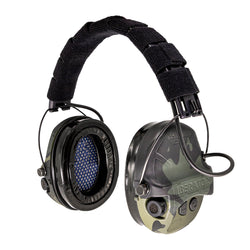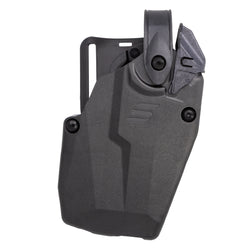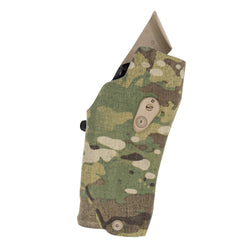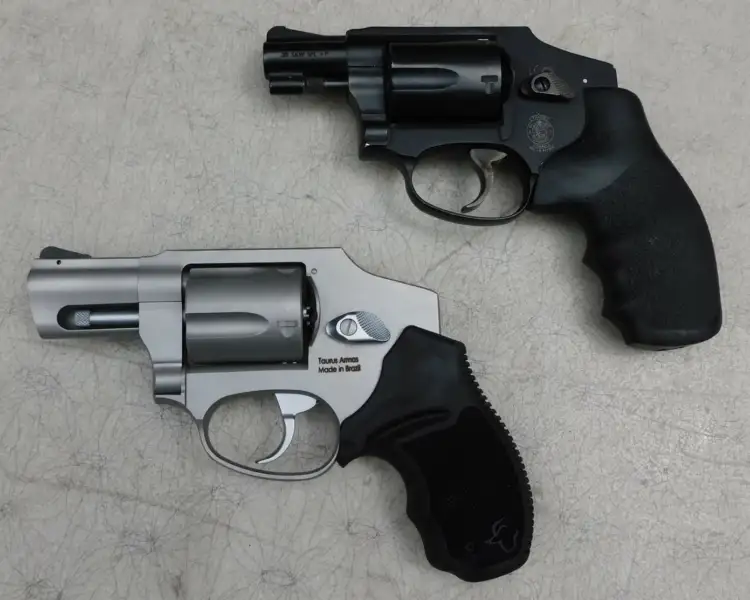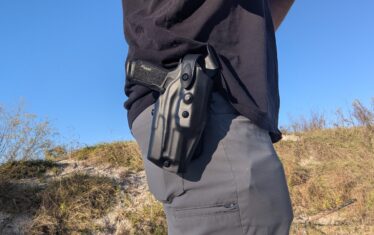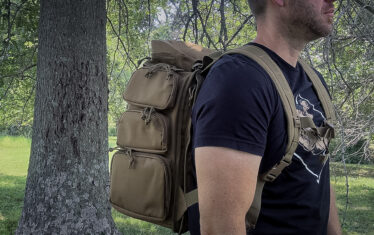The snub-nose revolver has been a self-defense staple for nearly a century, though its roots go back even further. The Smith & Wesson model 442 and 642 Airweight revolvers are among the most popular modern iterations of the classic “snubby.” The Taurus Model 850 revolver, at first glance, seems a near clone of the Smith & Wesson guns. But closer examination reveals some real differences, despite sharing the same personal defense role.
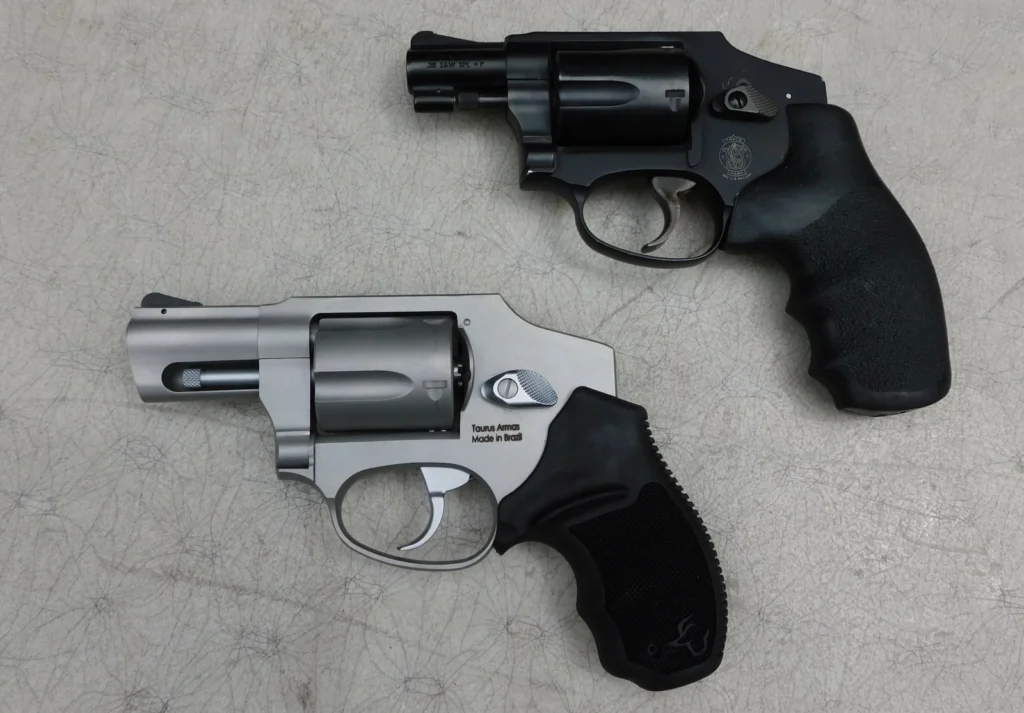
We recently got the opportunity to compare an S&W 442 and a Taurus 850 dimensionally, on the range, and by carrying both. The differences we uncovered merit an examination since they directly compete with one another in the firearms market.
I wanted a second opinion, so I enlisted my adult son, Will, who usually serves as my co-tester. He often provides unique insights that elude me, and I always value his input.
We examined each gun’s dimensions, which are indeed different and should influence buying choices. They also impact each gun’s performance and applications. We fired both guns extensively, sometimes trading off every five rounds to draw informed conclusions about their controls and operation. Finally, we each carried both guns on our belts and experimented with them as pocket and backup guns.
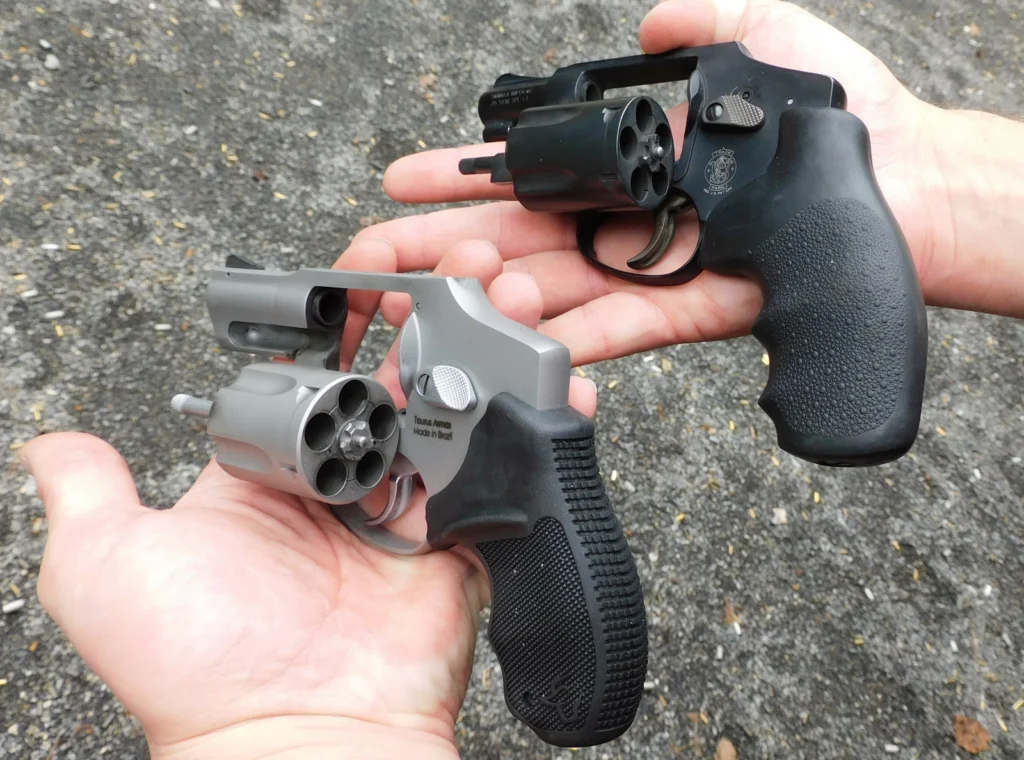
Overviews and Dimensional Differences
In the interest of space, I’ll dispense with each gun’s detailed specifications. Follow the product links if you want to see those. But here’s a brief description of each gun, followed by the differences between the two.
I will note here that the Taurus 850 comes with either a 2 or 3-inch barrel. Our example has the 2-inch barrel, as God intended for a snubby, which roughly matches the 442’s barrel. Both are chambered for .38 Special with +P compatibility.
The Smith & Wesson Model 442
The Smith & Wesson 442 is a classic shrouded hammer, double-action-only (DAO) J-Frame revolver. The aluminum alloy frame earns the ‘Airweight” descriptor, coming in at only 14.6 ounces. The barrel and cylinder are stainless steel. The 442 holds five rounds of .38 Special ammunition.
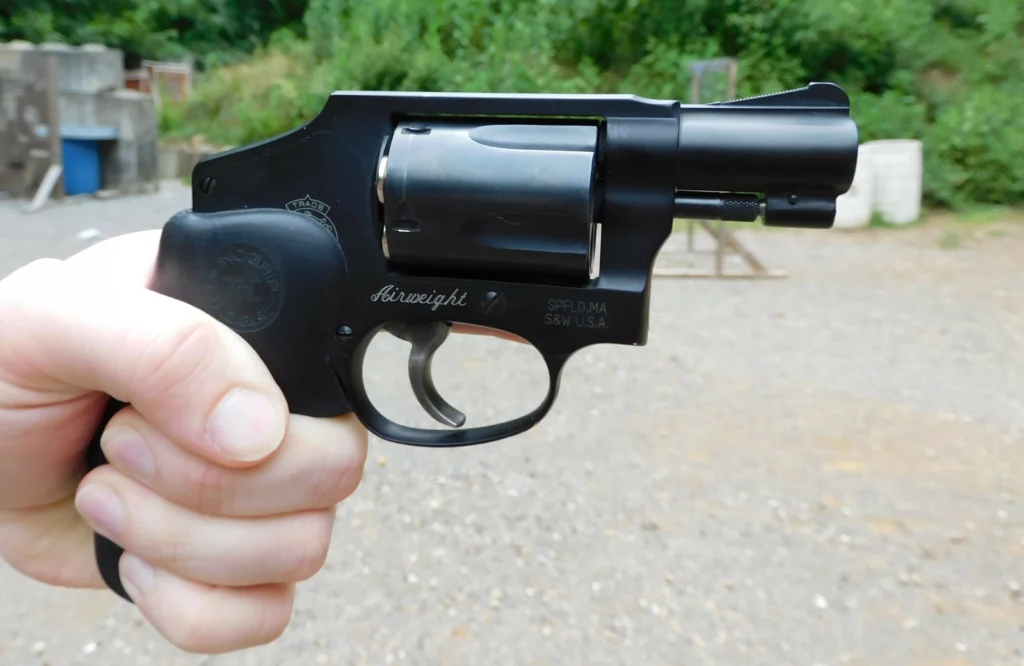
The sights are a ramped, serrated front blade, with a grooved top strap to prevent snagging. A semi-shrouded ejector rod helps cut a little more weight. My borrowed 442 has aftermarket Hogue grips, but the 442 ships with soft polymer grips with two low-profile finger grooves.
The Taurus Model 850
The Taurus 850 is built along familiar J-Frame lines with the shrouded hammer and DAO trigger. It also has a fully shrouded ejector rod.
The sights are similar to the 442’s, with the ramped, serrated front blade and grooved top strap. The grip is rubber with two low-profile finger grooves, and one small pinky groove that the 442 lacks. The 850 also holds five .38 Special cartridges.
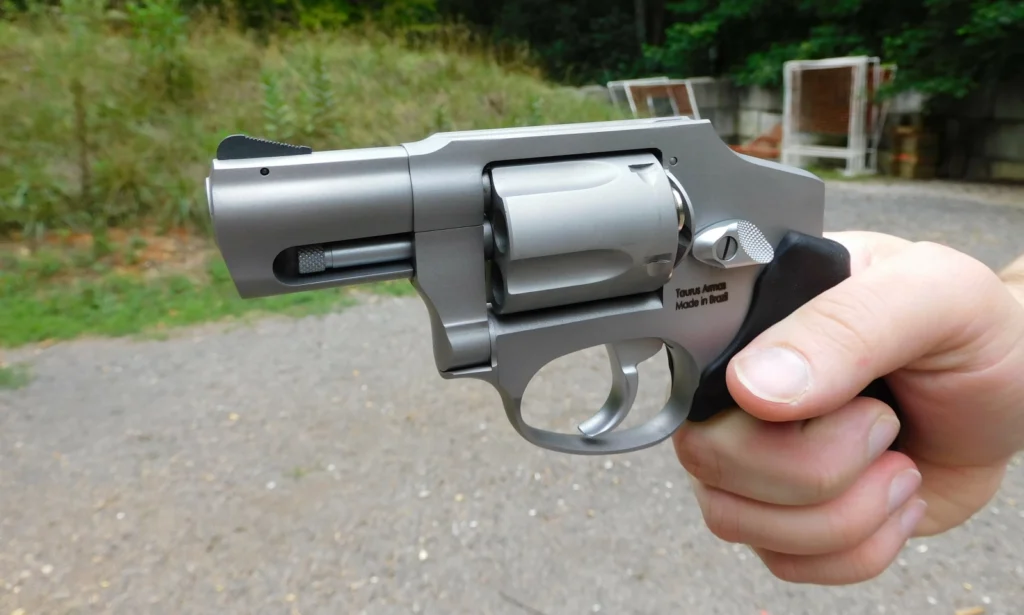
The biggest difference between the Taurus 850 and the S&W 442, however, is the construction material. The 850 is all stainless steel, with the resulting added weight. The 850 comes in at 22.75 ounces, 8.15 ounces more than the 442.
Differences
Besides the weight difference, the Taurus 850 is also a bit larger, which contributes to that weight. The 850 has a 2-inch barrel, whereas the 442’s barrel measures 1.88 inches. The Taurus’ overall width is 1.34 inches to the 442’s slightly smaller 1.3 inches.
We first noticed this difference when we tried to fit the Taurus into a leather holster made for the 442. It fits, barely, and it won’t seat quite as deeply. The 850 is 4.59 inches tall. The 442 measures 4.3 inches. These are small differences, but they add a bit to the 850’s weight.
The 442’s cylinder is slightly longer than the 850’s, which makes the latter’s frame a bit shorter, but it seems to only balance out the longer barrel length. These slight differences, confirmed by our observations, indicate that a quality holster likely won’t fit both as it should.
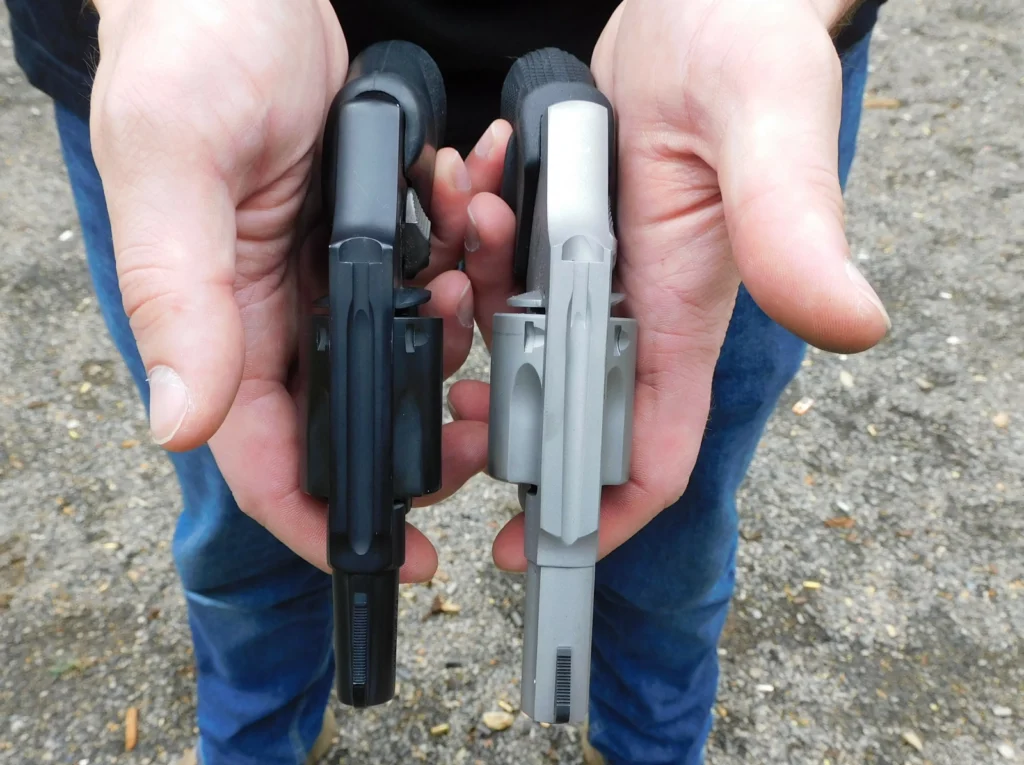
Shooting the Smith & Wesson 442 and Taurus 850
These two revolvers offer similar shooting experiences, though they are different enough to draw certain conclusions. Will and I each have 75 rounds through each gun in head-to-head competition. We sometimes traded guns after each five-round group to emphasize the differences we noticed.
Before going any further, I want to acknowledge the generous support of Ammo-to-Go, who provided the following ammo for our tests:
- 158-grain Magtech FMJ-Flat .38 Special
- 158-grain Federal Semi-Wadcutter HP .38 Special +P
- 110-grain Winchester Silvertip JHP .38 Special
We fired all three loads through both guns, directly comparing each one.
On the Range
Both the Taurus and the Smith were 100 percent reliable through the entire process, but definite trends emerged.
The 442 has a noticeably sharper recoil than the 850, particularly in the form of muzzle rise. That’s no surprise, considering the 442 weighs more than a third less than the Taurus. The all-steel construction and slightly larger size lets the heavier 850 handle the recoil impulse better.
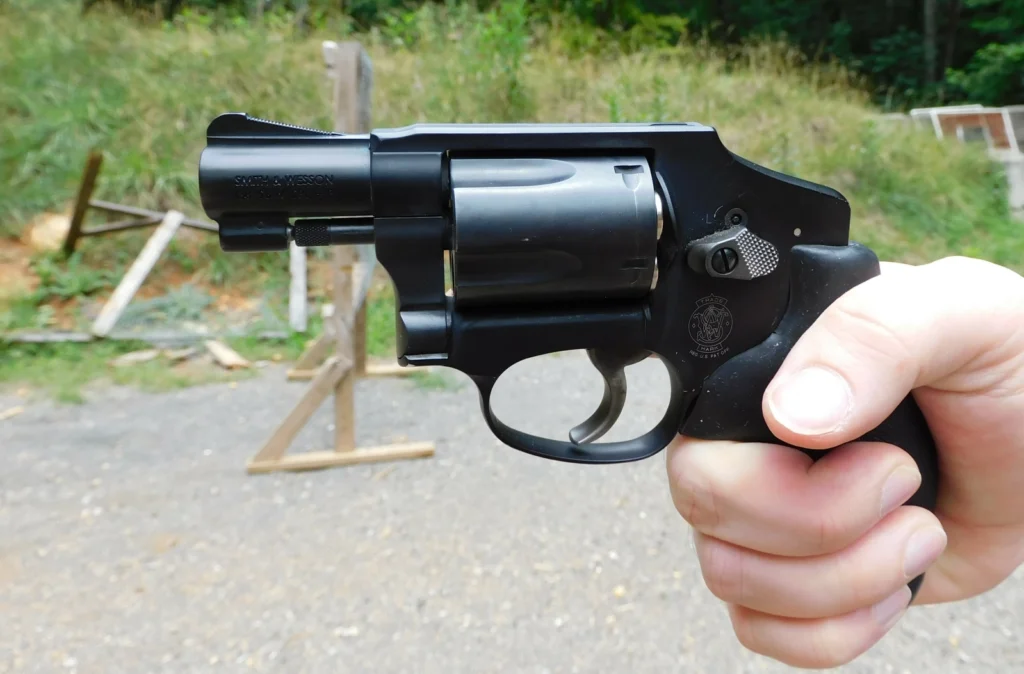
Trigger Comparison
The triggers are a bit different, too, though choosing the better one might be a matter of taste. Taurus does not list the 850’s trigger pull weight, but my Lyman Trigger Gauge measured its average at 9 lbs. 5 ounces. The S&W 442 was a bit lighter at 8 lbs. 7 ounces, despite Smith & Wesson listing it at 10 lbs.
The 442’s trigger is noticeably smoother, however, while the 850’s is less consistent. Both triggers can be staged to simulate a single action break, which I learned to do quickly with the Taurus. The Smith took longer, ironically because it’s smoother, requiring more dry fire to master the technique. But I eventually picked it up. Will doesn’t like staging the trigger, preferring to just pull through the long double action.
Honestly, I suspect most shooters will prefer the 442’s smoothness, but Will and I both like the 850’s trigger better. I like the easy staging, while he has always preferred a heavier DA trigger, both on revolvers and autoloaders. It’s most likely a personal preference as to which is better.
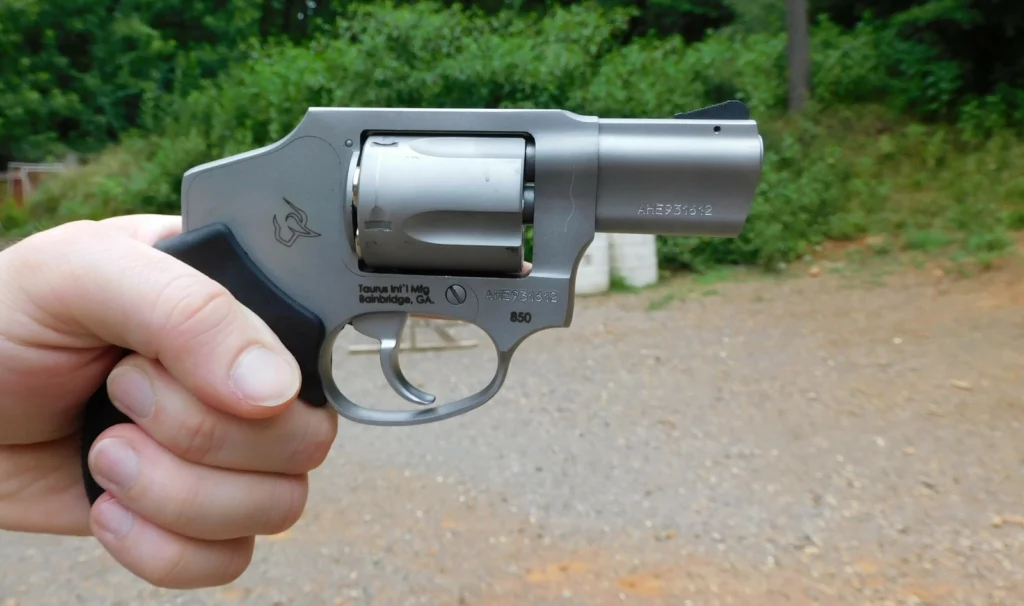
Taurus uses an S&W-like cylinder release, but the 442’s cylinder swings out much more smoothly. This 442 is several years older than the Taurus, so it may just be more broken in. I can only report what I observe, and the 442 is better in that regard.
Consistency
We both shot the Taurus 850 more consistently than the S&W 442. I was, frankly, surprised by that, but it makes sense for us. The 442 has significantly more muzzle flip, while we both preferred the heavier Taurus trigger. We fired faster, more accurate shot strings with the 850. That was consistent across all three ammunition loads. I got faster with the 442 as I became acclimated to the trigger, but the muzzle rise couldn’t match the 850’s stability.
Most shooters understand that firearm performance is a series of trade-offs. The 442 is much lighter than the Taurus, meaning the recoil is correspondingly heavier. Basic physics. The 442 will likely require more practice to shoot consistently because of that.
Carrying the Smith & Wesson 442 and Taurus 850
The trade-offs continue here, but now they flip. We used the same holster for both since the 850 fit well enough for testing. But the 850 needs its own holster, made to its dimensions, before being carried for real.
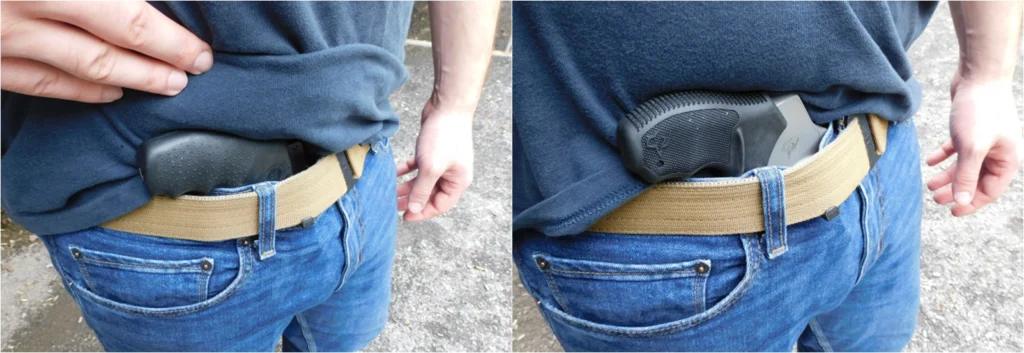
The 850 was comfortable on the belt and didn’t feel heavy. But the 442 felt like it wasn’t even there. “Airweight” is a very appropriate term for this gun. I carried both guns around my house at the 4 o’clock position, while Will carried them around his place at the appendix. We both agreed that the 442 was more pleasant. Again, the 850 wasn’t a problem. The 442 was just better.
Both guns drew smoothly with no snagging problems. We presented and got them on target quickly. The sights are low-profile to facilitate the draw stroke, but they are perfectly adequate, if nothing special, when getting a sight picture. That’s another trade-off.
We also tried them as pocket guns, but that didn’t work. The cylinders are too thick, and the Taurus is just too heavy. Both, however, work very well in coat pockets. But once again, the 442’s light weight makes it superior.
Finally, the 442 also wins when it comes to ankle carry. The Taurus was noticeable on the ankle, where the Smith & Wesson seemed to disappear after a few minutes. Weight again.
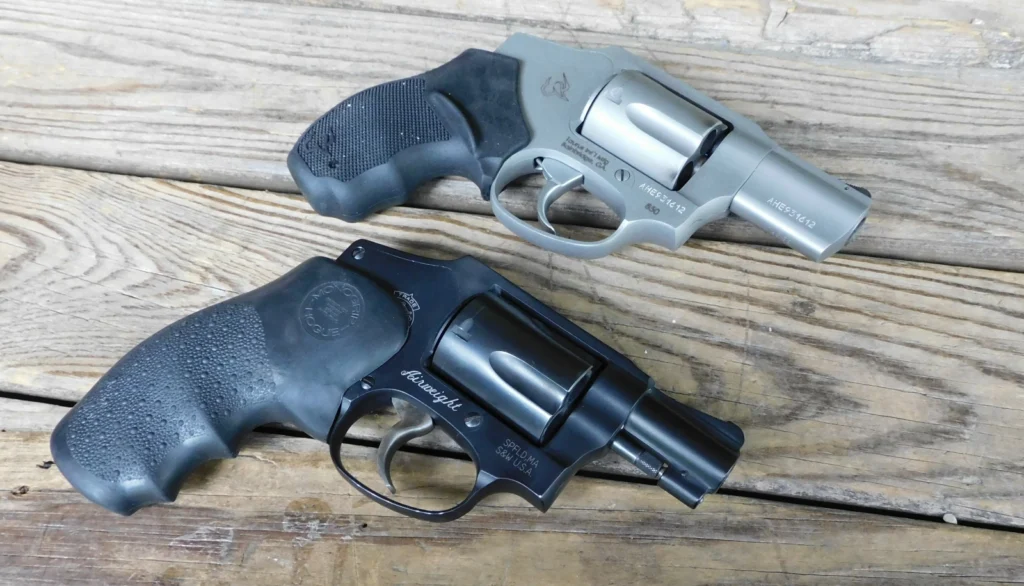
Smith & Wesson 442 vs Taurus 850: Value
Taurus lists the 850’s MSRP at $517.99. The Smith & Wesson 442 is a bit higher at $539.00. The retail prices, however, tell a different tale.
Six different retailers saw the 850’s price range from $335.49 to $443.55, with an average price of $380.04. The 442’s prices from the same retailers ranged from $475.99 to $539.99, the average price being $508.65.
I cannot speculate as to why a similar MSRP translates to such disparate retail prices. Well, I can speculate, but I won’t because it would be, well, speculation. I’ll leave that part to the reader. I suspect that individual shooters will be able to justify purchasing either gun, and who am I to say they’re wrong?
Final Thoughts
Both the Smith & Wesson 442 and the Taurus 850 have their strengths. I chalk up most of the significant differences to the construction material and, subsequently, the weight difference. The triggers are a personal preference, and I don’t see either one as being wrong. But the weight, with its benefits and drawbacks, is the deciding factor in my mind.
I think each gun represents a slightly different philosophy. Do you want a very light carry gun, perhaps as a backup? Or do you place more value on a more stable firing platform?
Experienced carriers and shooters who practice a lot might prefer the lighter Smith & Wesson. Those who practice less might like the heavier Taurus better. Only you can decide which one best fits your needs.
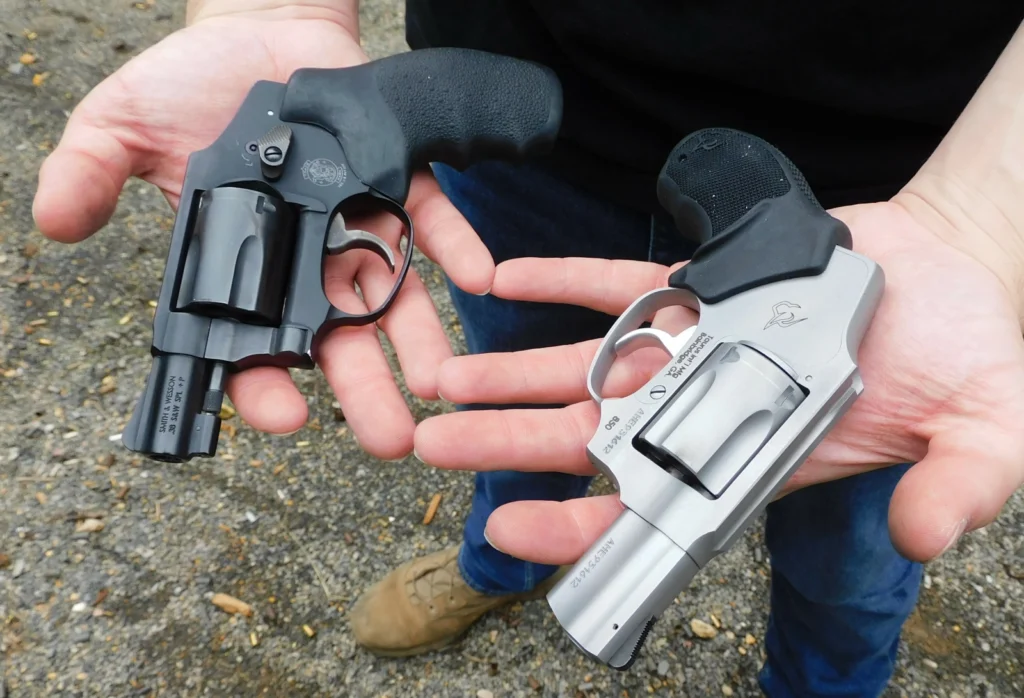
If I had to choose between the two, I’d probably go with the Taurus 850 as a primary carry gun. But I would definitely go with the Smith & Wesson 442 if I wanted a backup, especially if I planned to use an ankle holster.
As with many firearm-related choices, there is rarely a “best” choice. It usually depends on the shooter and the scenario in which the gun will be employed. The trick is knowing your needs and selecting the tool with which to accomplish the job at hand.
If you wanted me to pick a clear winner for you, I can’t. My answer when someone asks me some variation of the “best gun” question is always, “It depends.” This decision is no different. Choose wisely.


